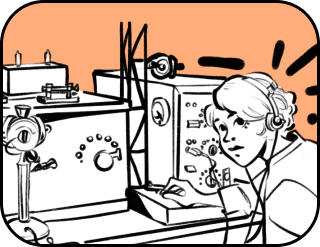Quality of life vs. life extension: the eternal battle
Hello. My name is Mr. T, and today I will be your personal guide. After this short tour, you will face a choice that will shape your future.
You have only two paths: red or blue. The red path offers a long life, while the blue one focuses on the depth and quality of the days you live.
I am not here to convince or sway you toward one path. My goal is to explain, provide facts, and make you think about what is right or wrong for you personally.
Are you ready to journey into eternity? Let’s begin.
The Red Path: Life Extension
If you’re leaning toward the red path, it means you value the idea of time. How many years would you like to live? 80? 100? 150? 200? Medicine, science, and technology are already offering tools to significantly increase life expectancy.
Medical and Technological Advancements
Throughout its history, humanity has sought ways to extend life. In ancient times, alchemists believed in the existence of a philosopher’s stone that could grant immortality. Truth-seekers spent years experimenting with elixirs and hazardous elements like mercury, lead, and magical herbs.
In China, emperors sent special expeditions to return with an elixir of immortality made from rare minerals and unique plants. During Medieval Europe, great scholars attempted to combine science and mysticism to create recipes for eternal youth. Even legends of the Holy Grail—a cup said to heal and grant eternal life—reflect humanity’s desperate desire to cheat time.
It’s hard to say how close we’ve come to uncovering the secret of immortality since those ancient myths, but science is advancing every day.

- Genetic Modification
Scientists are exploring how altering gene activity could slow the aging process.
Two genes—FOXO3 and SIRT1—are considered crucial for longevity as they regulate processes that protect our cells from aging.
FOXO3 acts as a defender, helping cells recover when damaged by stress, poor environment, or other factors. This gene also removes old, malfunctioning cells that only hinder the body. People with better FOXO3 activity often live longer. For example, among the long-living population of Okinawa, Japan, this gene is particularly active. Interesting, isn’t it?
SIRT1 oversees the energy stations of our cells, known as mitochondria. The better these biological stations work, the more energy the body has and the less wear and tear it experiences. Moreover, this gene reduces inflammation in the body, which over time can lead to diseases like diabetes or arrhythmia.
Scientists are working to understand how to activate these genes to help the body age more slowly. For example, studies show that specific diets and some medications can trigger their activity.
And genetic engineering is just the beginning of a long journey. If scientists learn to control such genes, it could allow us to live many more years with maximum energy and health.

- Drugs for Life Extension
Drugs like metformin and rapamycin are being tested as potential agents for increasing life expectancy. Numerous studies have shown that they slow down aging processes at the cellular level.
Metformin is a drug prescribed to diabetic patients to lower blood sugar levels. However, research has shown that this drug can also protect cells from age-related damage. Metformin helps improve cell function by reducing oxidative stress (when harmful molecules accumulate in the body) and inflammation. Animal experiments have shown that those who received metformin lived longer. The drug is currently being tested on humans to determine whether it can truly slow down aging.
Rapamycin is used to prevent organ rejection after transplants. It also affects a special mechanism in cells called mTOR, which is related to growth and aging. By slowing this process, rapamycin allows cells to function longer and more efficiently. Studies on mice have shown that this drug can significantly increase life expectancy.
These drugs are not yet the “fountain of youth” pills, but the early results from their use offer hope. Scientists are carefully studying side effects and trying to find safe dosages that could be used in the future to extend human life.

- Artificial Organs
Today, doctors are already transplanting hearts, lungs, and kidneys created using 3D printing. These organs use biomaterials that can mimic human tissues, significantly increasing the chances of successful transplantation.
Scientists are working on growing organs from the patient’s own cells in the future—this would allow the creation of perfectly compatible tissues and minimize the risk of rejection. For example, patient cells can be taken from skin or blood, and then reprogrammed into stem cells, from which a new organ can be created. This technology is already being successfully used for cartilage and blood vessel regeneration.
If such developments become widespread, the approach to life extension will change dramatically—an old, worn-out organ could be replaced with a new one. In some cases, there might not even be a need to wait for an organ to wear out—you could simply discard the old one and buy a new one.

- Tissue Rejuvenation
Studies show that stem cells can restore damaged or aging tissues. These cells are unique because they can transform into any type of tissue in the body—from skin and muscles to nerve cells. For example, there are treatment methods where stem cells are used to regenerate joints, heart muscle after a heart attack, or skin tissues.
Scientists continue to search for ways to use stem cells more widely to kickstart rejuvenation processes, helping cells to work at full capacity.
These achievements are far from science fiction. Organ transplants save 30,000 lives annually, and metformin, a common drug used to treat diabetes, has begun clinical trials as a treatment for aging.

How Will This Change Reality?
Over the last 100 years, life expectancy has nearly doubled thanks to medical discoveries and overall improvements in quality of life—average life expectancy in developed countries exceeds 80 years. However, in previous centuries, no one consciously thought about extending life. It grew parallel to progress—people lived longer due to reduced child mortality, the introduction of antibiotics, and advances in surgery. But the idea of intentionally extending life as a scientific task barely existed. Just half a century ago, there was no research on aging, and no public interest in longevity.
Now, the situation has drastically changed. Scientists increasingly claim that children born in the middle of the 21st century may live to be 120-150 years old, thanks to new technologies, artificial organs, and rejuvenating drugs. For the first time in human history, the study of aging has become a trend, and life extension is one of the most important goals of modern science.

However, it’s not that simple.
Imagine you are 120 years old and still full of energy. What will you do with the additional time? How will it affect your relationships with loved ones? Are you ready for changes in social dynamics if longevity becomes the norm?
“What’s with these strange questions?” you might say. “Give us longevity, and we’ll figure it out.”
The thing is, extending life is not just about numbers. A long life can become unbearable without meaning. Many problems associated with longevity won’t be solved just by a snap of the fingers, even if technology and medicine continue to advance.
Physical Challenges remain a significant obstacle. Aging inevitably leads to a decline in the functioning of systems and organs. Even if we learn to treat many age-related diseases—arthritis, diabetes, or cardiovascular issues—the treatment process itself may be difficult and exhausting. For example, many long-livers face the need for constant medical care or regular interventions, which requires tremendous effort.
Extending life without improving its quality could turn into a battle with diseases, which does not contribute to enjoying extra years.

Social and Psychological Aspects of long life also leave their mark. For many people, old age is associated with the loss of loved ones and friends. Even if a person lives longer thanks to scientific advancements, no one guarantees that their social circle will live just as long. The loss of social connections, loneliness, and the feeling that the familiar world is slowly disappearing can cause strong emotional stress. Monotony may also become a challenge—if long years pass without change, many start to lose motivation and interest in life.

Economic Challenges also affect the quality of longevity. Maintaining health over an extended period requires money, time, and resources. Medical procedures, prevention, quality nutrition, physiotherapy, and regular check-ups may become an unbearable burden if a person lives longer than their financial stability allows. On a global scale, an increase in the number of long-livers could overload pension systems, healthcare, and social services, as most of these systems are not designed for people to live to 100 or beyond.
From a medical standpoint, extending life is not a difficult task, but will scientists be able to ensure that additional years are a gift, rather than a trial?

Blue Path: Quality of Life
The blue path focuses on how you live your days. Here, it’s not about the number of years, but the fullness of each moment. Many people come to the conclusion that life expectancy doesn’t matter as much if life itself is filled with joy and meaning.
Quality of life is not measured in FLOPS
Quality of life is understood as the degree to which a person feels comfortable in their body and soul, as well as in their environment. It is about how happy and satisfied someone is with their state. Important aspects of quality of life include physical health, psychological comfort, and social connections.

- Physical Health
The level of energy, absence of chronic pain, or physical limitations—this is how well our body functions. A lack of movement restrictions and good health allow a person to enjoy life and carry out daily activities.
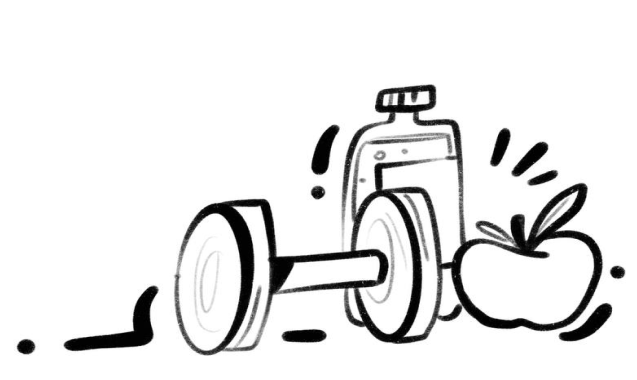
- Psychological Comfort
When a person isn’t under constant stress and isn’t plagued by anxiety about the future, they feel confident and calm. It’s important for a person to be able to cope with difficulties and maintain inner balance, despite the problems that may arise in life.

- Social Connections
The comforting feeling of having loved ones who can help and support you provides confidence and a sense of security. Warm relationships with family, friends, and colleagues are important for feeling part of society and not being lonely.
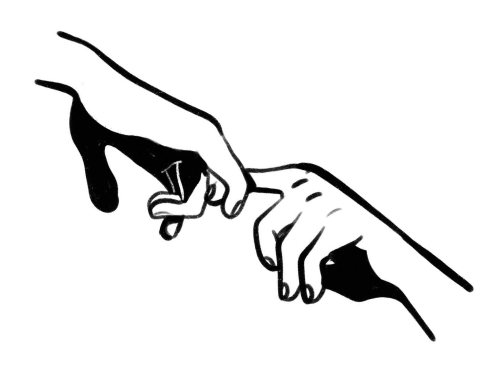
“>Modern technology is also actively working to enhance quality of life:
Health monitoring devices are becoming more and more popular, helping people keep track of their well-being and make informed decisions. Smartwatches and fitness trackers can track heart rate, stress levels, steps taken, calories burned, and even sleep quality. Some models are equipped with features to measure blood oxygen levels (SpO2) and monitor blood pressure. These data help in daily life and serve as tools for disease prevention. For example, regularly monitoring heart rate can help spot irregularities in time and consult a doctor.
The popularity of these devices is growing rapidly—over 500 million fitness trackers and smartwatches were sold worldwide in 2023. According to research, using these gadgets can increase physical activity levels by 30-40%, as people are motivated to achieve set goals: meeting daily step targets or sticking to workout schedules. In this way, technology not only helps monitor health but also encourages the formation of healthy habits.

Innovative approaches in medicine are opening new possibilities for restoring and improving quality of life. One such achievement is robotic prosthetics, which restore lost functions. These devices are equipped with sensors and artificial intelligence so that people with disabilities can control prosthetics as naturally as real limbs.
According to the World Health Organization, over 30 million people worldwide need prosthetics and orthotics, and new technologies help meet this demand.
For example, adaptive prosthetics allow a person to run or play musical instruments. These developments give hope to millions, restoring their independence and confidence.
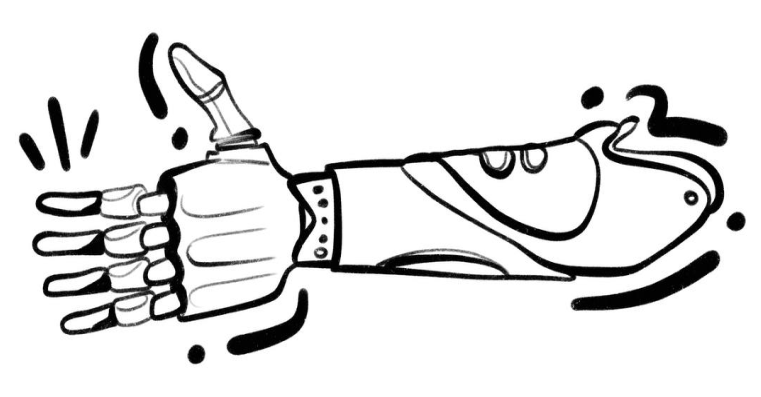
Modern Pain Management and Rehabilitation Therapy
Modern pain management methods and rehabilitation therapy help people recover more quickly after injuries and illnesses, returning them to a full life. The latest approaches include the use of physiotherapy, therapeutic massage, as well as laser therapy, electrostimulation, and ultrasound. These technologies effectively reduce pain, alleviate inflammation, and accelerate tissue healing, significantly shortening rehabilitation times.
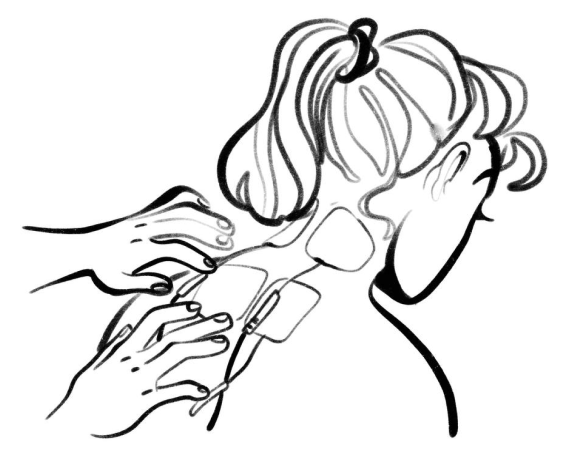
According to studies, about 70% of patients who undergo rehabilitation therapy return to their normal activities within the first three months after treatment. Technical pain management methods are complemented by cognitive-behavioral therapy and the use of new-generation drugs. These comprehensive approaches help eliminate pain and prevent its chronic development, improving the quality of life for millions of people.
Why is this important?
Research shows that subjective feelings of happiness and well-being are not always related to age. In Denmark, Finland, and Iceland, countries with a high quality of life, people rate their happiness at 7.5–8 out of 10, despite having an average life expectancy of around 80 years.
People who lead an active lifestyle, regularly interact with family and friends, experience lower levels of stress and are more often satisfied with their lives.
People who feel happy and satisfied are less likely to suffer from hypertension, diabetes, and cardiovascular problems. Positive emotions and life harmony strengthen the immune system, promote rapid recovery after illness, and increase overall stamina.
However, it’s not that simple.
What do you remember when thinking about your happiest days? How long did they last?
Choosing quality of life also requires effort:
- You will need to be ready for constant self-work. You must consciously choose what brings you joy. This is not easy in a world full of distractions.
- You will need to recognize the issue of life’s finiteness. The richer life is, the harder it is to accept its finiteness. The more we achieve, the harder it is to acknowledge that time is limited. This can cause anxiety or even fear of losing everything we value. However, accepting life’s finiteness is also an important step toward understanding that every moment has its value.

- You will have to sacrifice something. Finding a balance between work, hobbies, family, and rest can be challenging. In today’s demanding professional and social environment, it is often difficult to find time to focus on personal interests or simply relax. It is important to understand that overload and constant rushing can negatively affect both productivity and emotional well-being. To achieve harmony, one must consciously prioritize, plan time effectively, and regularly take breaks to restore energy.
Is balance possible?
Some believe that the paths to longevity and improving quality of life cannot be combined, but this is not true. Modern technologies, medicine, and philosophical approaches help combine the best of both worlds.
Take care of your health to prolong life. Without good physical condition, it is hard to enjoy a full life, whether you aim for long years or for filling each day with meaning. Regular physical activity, balanced nutrition, avoiding harmful habits, and caring for emotional well-being help strengthen the body and prevent many diseases.
- Make time for what brings you joy. It’s important to find time for activities that inspire and energize you, whether it’s hobbies, spending time with loved ones, or resting in nature. These moments help enjoy life, maintain physical and emotional health, and increase happiness levels.
- Plan for the future, but don’t forget the present. People who know how to enjoy the present moment are less prone to stress and 23% less likely to suffer from depression and anxiety. It’s essential to always find time for what truly matters to you.

And Now Your Choice
Which path will you choose – conscious longevity or conscious living in the moment? Perhaps you can find a way to combine both paths?
Take care of your health, start eating properly, move more, and avoid harmful habits. Find time for what brings you joy and inspiration.
And may everything go well for you in the new year.
The double-slit paradox awaits you! Learn from particles how to act mysteriously and unpredictably.
Thank you!



